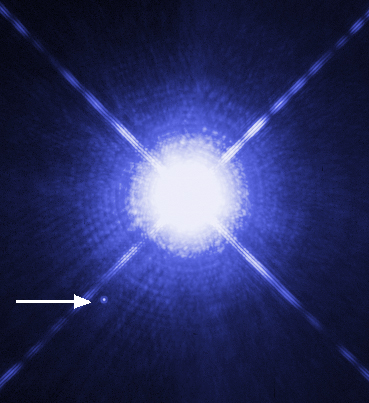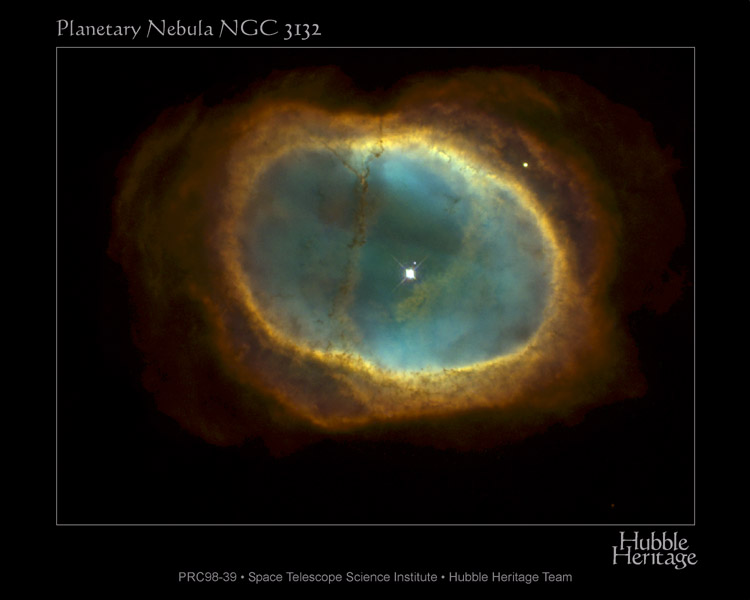What are white dwarfs?
White dwarfs are stars consisting of electron-nuclear plasma, devoid of
The closest known white dwarf is Sirius B,located 8.6 light years away. It is assumed that among the hundred closest star systems to the Sun, eight stars are white dwarfs. At present, white dwarfs make up, according to various estimates, from 3 to 10% of the stellar population of our galaxy (the uncertainty of the estimate is due to the difficulty of observing distant white dwarfs due to their low luminosity).
White dwarfs are formed during the process of evolutionstars whose mass is insufficient to turn into a neutron star, namely, does not exceed about 10 solar masses, which in our galaxy constitutes more than 97% of the total. When a low- or intermediate-mass main sequence star finishes fusing hydrogen into helium, it expands to become a red giant.
The red giant is supported by thermonuclearreactions of converting helium into carbon and oxygen. If the mass of a red giant is insufficient to raise the temperature of the core to the level necessary for thermonuclear reactions involving the resulting carbon, it accumulates in the core of the star, along with oxygen.
The star sheds its outer shell, forming a planetary nebula, and the former core of the star becomes a white dwarf made of carbon and oxygen.
 White dwarf Sirius B (arrowed) next to bright Sirius A. Photo by the Hubble Telescope
White dwarf Sirius B (arrowed) next to bright Sirius A. Photo by the Hubble Telescope
The origin of white dwarfs
In explaining the genesis of white dwarfs, the keyTwo ideas played a role: the idea of astronomer Ernst Epik that red giants are formed from main sequence stars as a result of the burnout of nuclear fuel, and the assumption of astronomer Vasily Fesenkov that main sequence stars should lose mass, and such a loss of mass should have a significant impact on the evolution of stars. These assumptions were fully confirmed.
- Contraction of white dwarfs
Theorists predicted that young whitesdwarfs at an early stage of evolution should shrink. According to calculations, due to gradual cooling, the radius of a typical white dwarf may decrease by several hundred kilometers in the first million years of its existence.
In 2017, Russian astrophysicists fromThe State Astronomical Institute named after P.K. Sternberg Moscow State University, the Institute of Astronomy of the Russian Academy of Sciences, the Institute of Theoretical and Experimental Physics named after A.I. Alikhanov and the National Institute of Astrophysics (Milan) under the leadership of Professor Sergei Borisovich Popov, for the first time in the world, documented the discovery of a young white dwarf, very rapidly decreasing radius.
Russian scientists and their Italian assistantsstudied the X-ray emission of the binary system HD49798/RX J0648.0-4418, located in the constellation Puppis at a distance of two thousand light years from Earth. The research results were published in the journalMonthly Notices of the Royal Astronomical Societyin February 2018.
 Figure: 8. Exotic binary system PSR J0348 + 0432, consisting of a pulsar and a white dwarf that revolves around it in 2.5 hours
Figure: 8. Exotic binary system PSR J0348 + 0432, consisting of a pulsar and a white dwarf that revolves around it in 2.5 hours
Evolution of white dwarfs
White dwarfs begin their evolution as the exposed degenerate cores of red giants that have shed their shell - that is, as the central stars of young planetary nebulae.
The temperatures of the photospheres of the nuclei of young planetarynebulae are extremely high - for example, the temperature of the central star of the nebula NGC 7293 ranges from 90,000 K (estimated from absorption lines) to 130,000 K (estimated from the X-ray spectrum). At these temperatures, hard ultraviolet and soft X-rays account for most of the spectrum.
At the same time, the observed white dwarfs in theirspectra are predominantly divided into two large groups - “hydrogen” spectral class DA, in the spectra of which there are no helium lines, which make up ~80% of the population of white dwarfs, and “helium” spectral class DB without hydrogen lines in the spectra, making up most of the remaining 20% populations.
The reason for this difference in the composition of the atmospheres of whitesdwarfs have long remained unclear. In 1984, Iko Iben considered scenarios for the "exit" of white dwarfs from pulsating red giants located on the asymptotic giant branch at different pulsation phases.
Late stage
At a late stage of evolution in red giants withwith masses up to ten solar, as a result of the “burnout” of the helium core, a degenerate core is formed, consisting mainly of carbon and heavier elements, surrounded by a non-degenerate helium layer source, in which a triple helium reaction occurs.
In turn, above it there is a layera hydrogen source in which thermonuclear reactions of the Bethe cycle take place, converting hydrogen into helium, surrounded by a hydrogen shell; thus, the external hydrogen layer source is the helium “producer” for the helium layer source.
Helium combustion in a layer source is subject tothermal instability due to extremely high temperature dependence, and this is aggravated by the higher rate of conversion of hydrogen to helium compared to the rate of helium burnout; the result is the accumulation of helium, its compression until degeneration begins, a sharp increase in the rate of the triple helium reaction and the developmentlayer helium flash.
 Figure: 5. Planetary nebula NGC 3132: a double star in the center - an analogue of Sirius
Figure: 5. Planetary nebula NGC 3132: a double star in the center - an analogue of Sirius
How can light from white dwarfs help scientists?
- Planetary systems
In a new study, astronomers led byMark A. Hollands show that after the death of a star, not all evidence of the existence of a planetary system disappears from the map of the Galaxy.
If planets remain in the system or their barecores, then the gravitational interaction between them could cause the fragments to eventually fall onto the remnants of the parent star. This remnant of a star, called a white dwarf, is composed almost entirely of carbon and oxygen, surrounded by a dense but thin shell of hydrogen and helium.
Naturally, any object that comes up tooclose, will be torn to pieces by the extreme gravity of the white dwarf, and its fragments will fall on the surface of the star, where they will mix with the hydrogen and helium of the shells.
Lithium, calcium found in dwarf photospheresand sodium, while magnesium, potassium, chromium, and iron were also found in the case of the dwarf LHS 2534. The composition of the clastic material that falls on the studied white dwarfs is enriched in lithium and depleted in calcium in comparison with the bodies of the solar system and most closely matches the content found in the Earth's continental crust.
After hitting the star, the elements included inthe composition of the destroyed object, such as lithium and calcium, begin to emit their own light with unique spectral characteristics, allowing them to be unambiguously identified.
Most white dwarfs are toohot, and their bright light makes it difficult to see any contamination. However, the recent Gaia mission helped map dozens of ancient, cool white dwarfs, and astronomers have discovered clear signs of planetary bones in the atmospheres of these stars.
 Figure: 3. Population of white dwarfs in the globular star cluster NGC 6397. Blue squares - helium white dwarfs, purple circles - "normal" white dwarfs with a high carbon content
Figure: 3. Population of white dwarfs in the globular star cluster NGC 6397. Blue squares - helium white dwarfs, purple circles - "normal" white dwarfs with a high carbon content
In the case of the WD system J2317+1830 was noticedexcess infrared radiation, indicating ongoing accretion of debris from the circumstellar disk onto the dwarf, with a total accretion rate estimated at 3 × 106 grams per second.
Considering that the progenitor of this whiteThe dwarf could be a star with a mass of 4.8 times the mass of the Sun, and the idea of the formation of planets after the death of the star was considered unsuccessful, this proves the idea that stars of spectral type B form planetary systems and survive to the stage of a white dwarf.
- Exoplanets
In addition, WD J2317 + 1830 is one of thethe oldest systems where differentiated rocky planets could have formed. All of this makes it possible to impose constraints on planetary formation models that are extremely difficult to obtain from observations of planets around main sequence stars or giants.
How does this help?
According to scientists, the discovery sheds lighton the processes occurring in our Universe, in which many generations of planetary systems have changed over 13 billion years of existence.
Read more
Look at an 8 trillion pixel image of Mars
Scientists have developed a replacement for the theory of relativity. What is the essence of the "theory of everything"?
Scientists have found evidence of interbreeding of modern humans with Neanderthals